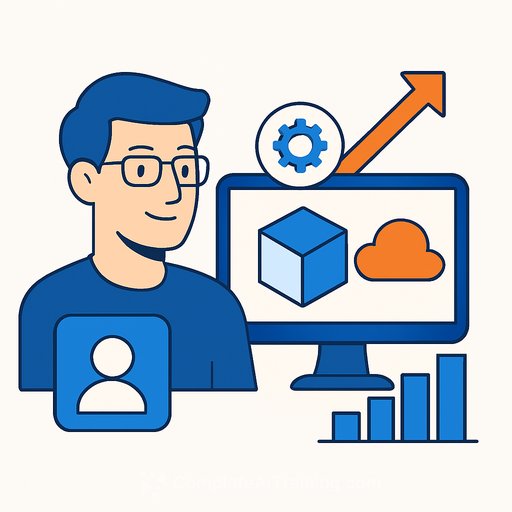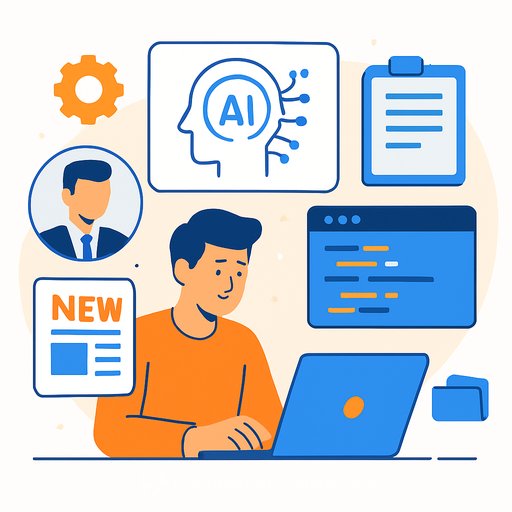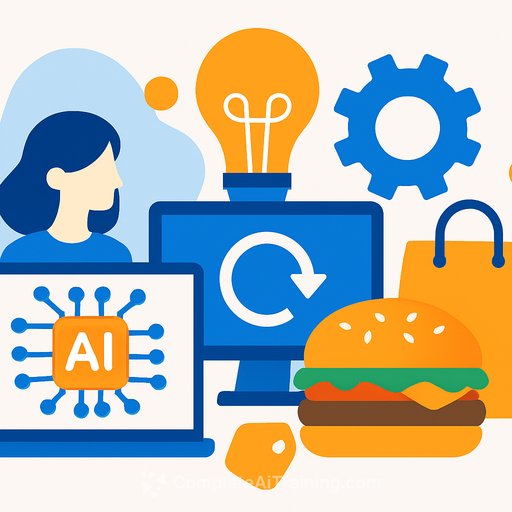Onshape's New AI Advisor: What It Means for Product Teams-and PTC's Next Phase
PTC announced new AI capabilities inside Onshape, including a real-time AI Advisor and a roadmap for agent-driven features. The move leans into Onshape's strengths: cloud scale, collaboration, and open APIs-areas where file-based CAD still struggles. For product teams, this is less about hype and more about shaving time off decisions inside the model.
Why product teams should care
Real-time guidance inside the CAD workspace means fewer rework loops and faster calls on feasibility. Cloud-native architecture turns AI from a desktop plugin into a shared capability across teams and suppliers. Open APIs let you wire design feedback into PLM, QMS, and manufacturing screens without manual exports.
If you're evaluating, focus on three questions: Does AI improve model quality in the moment, does it shorten review cycles, and does it integrate with your existing data backbone?
Practical uses you can deploy this quarter
- Standards and intent checks: Flag sketch, constraint, and feature issues early to reduce design debt.
- DFM/DFS guidance: Surface manufacturability and serviceability risks before handoff.
- Metadata and naming: Auto-suggest consistent part names, properties, and BOM fields for cleaner downstream data.
- Collaboration prompts: Nudge reviewers at the right time with context from change history and comments.
- Automation candidates: Identify repetitive feature patterns and propose templates or macros.
Because Onshape is cloud-native, these gains compound across teams-especially where external partners need the same source of truth. For many orgs, the win is fewer meetings, faster approvals, and higher first-pass yield in prototypes.
Integration signal: Enlil x Onshape
Enlil Inc.'s Onshape integration highlights the value of open APIs and real-time data in high-compliance environments like medical devices. Continuous traceability-model to requirement to test-becomes practical when your CAD and quality systems talk without file handoffs.
If your process is gated by design controls, this is a meaningful shift. It supports audit readiness and reduces the friction between engineering and quality.
What this means for your stack
- Data readiness: Clean your naming standards, properties, and permissions so AI suggestions are trustworthy.
- API plan: Map event-driven triggers from CAD to PLM/QMS/ERP. Start with change notifications and metadata sync.
- Pilot scope: Choose one product line with recurring rework. Define success as cycle time and first-pass approval rate.
- Metrics: Track review turnaround, defect escapes, and engineering hours per ECO.
- Change management: Train reviewers and leads first; write a short playbook for when to accept or override AI guidance.
- Security review: Confirm data residency, access logging, and vendor AI usage policies meet your requirements.
PTC's business context (useful for vendor risk)
PTC is leaning hard into AI-driven design and lifecycle tools to drive ARR. The Onshape AI Advisor fits that push, but the near-term story still depends on subscription growth and deal timing.
Risks remain: competition across CAD/PLM and potential delays from policy and trade uncertainty that can push deals across quarters. Outlook targets point to about $3.3 billion in revenue and $814.8 million in earnings by 2028, implying roughly 9.6% annual revenue growth and an earnings increase of about $302.1 million from the current $512.7 million.
One valuation model suggests a fair value near $224.68-about an 11% upside from current pricing. Community estimates vary widely, ranging from around US$160 to an outlier above US$230,000, which underscores how divergent expectations are around AI adoption and category competition.
What to watch next
- Agent-driven workflows: Movement from suggestions to multi-step automation with approvals.
- Pricing and packaging: Whether AI becomes a standard entitlement or a premium add-on that impacts ARR.
- Ecosystem: Third-party apps that use Onshape's APIs to extend AI checks across PLM/QMS/ERP.
- Case studies: Proof that real-time guidance cuts rework and increases first-pass approvals on complex assemblies.
- Procurement velocity: Whether policy/trade noise slows enterprise commitments.
If you're assessing Onshape, validate that AI guidance improves design outcomes inside your real models-not demo parts. Start small, instrument the workflow, and expand where the data shows clear cycle-time and quality gains.
Learn more about Onshape
Review the Onshape API documentation
If your team is upskilling on AI for engineering workflows, explore curated options by role here: AI courses by job.
Your membership also unlocks:






